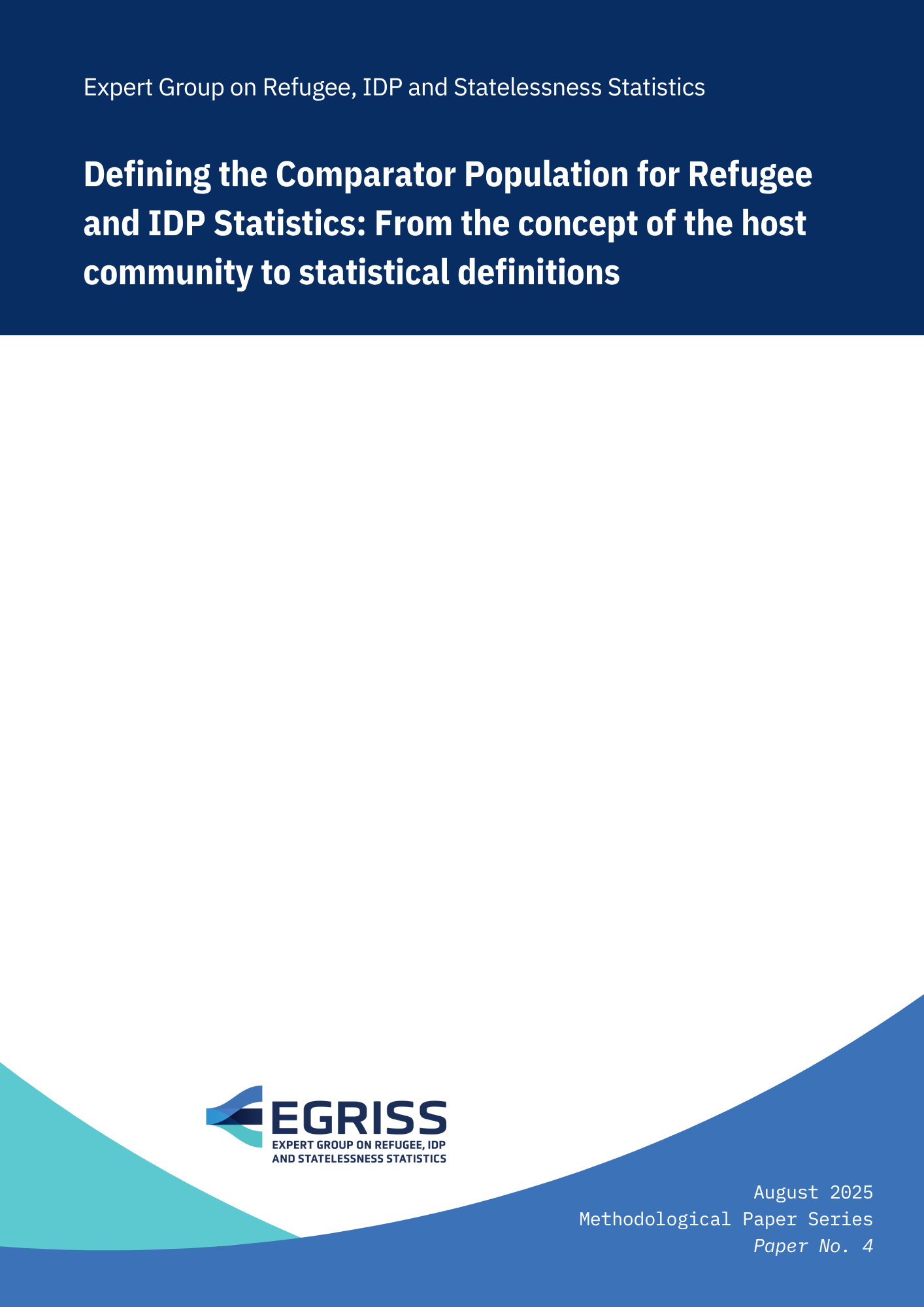This paper addresses a critical gap in displacement statistics by working to establish a standardised definition of “comparator populations” – the non-displaced groups against which refugee and internally displaced person (IDP) outcomes are measured. Through a systematic review of existing data collections and empirical analysis across four displacement contexts (Jordan, Colombia, South Sudan, and the Democratic Republic of Congo), the paper evaluates five main approaches to defining comparator populations: the general/national population, populations in affected administrative areas, distance-based definitions, criteria-based definitions, and other specialised approaches. The research assesses these definitions based on three key criteria: standardisation potential, benchmark bias, and volatility risks, finding that different definitional approaches often yield surprisingly comparable results in practice.
For official displacement statistics, the paper recommends using either the national population or populations in affected administrative areas as comparator groups, given their high standardisation potential and feasibility for implementation. While more targeted definitions like physical proximity or cohabitation-based approaches may offer theoretical advantages, they require additional methodological guidance to ensure consistent application across contexts.
This is the fourth issue of the EGRISS Methodological Paper Series. The collection of documents is intended as the Expert Group’s input to ongoing methodological debates and does not constitute consensus or represent the official views of EGRISS, its members, Technical Subgroup 2 on Methodological Research and Guidance Development, or the institutions with which the authors are affiliated.

